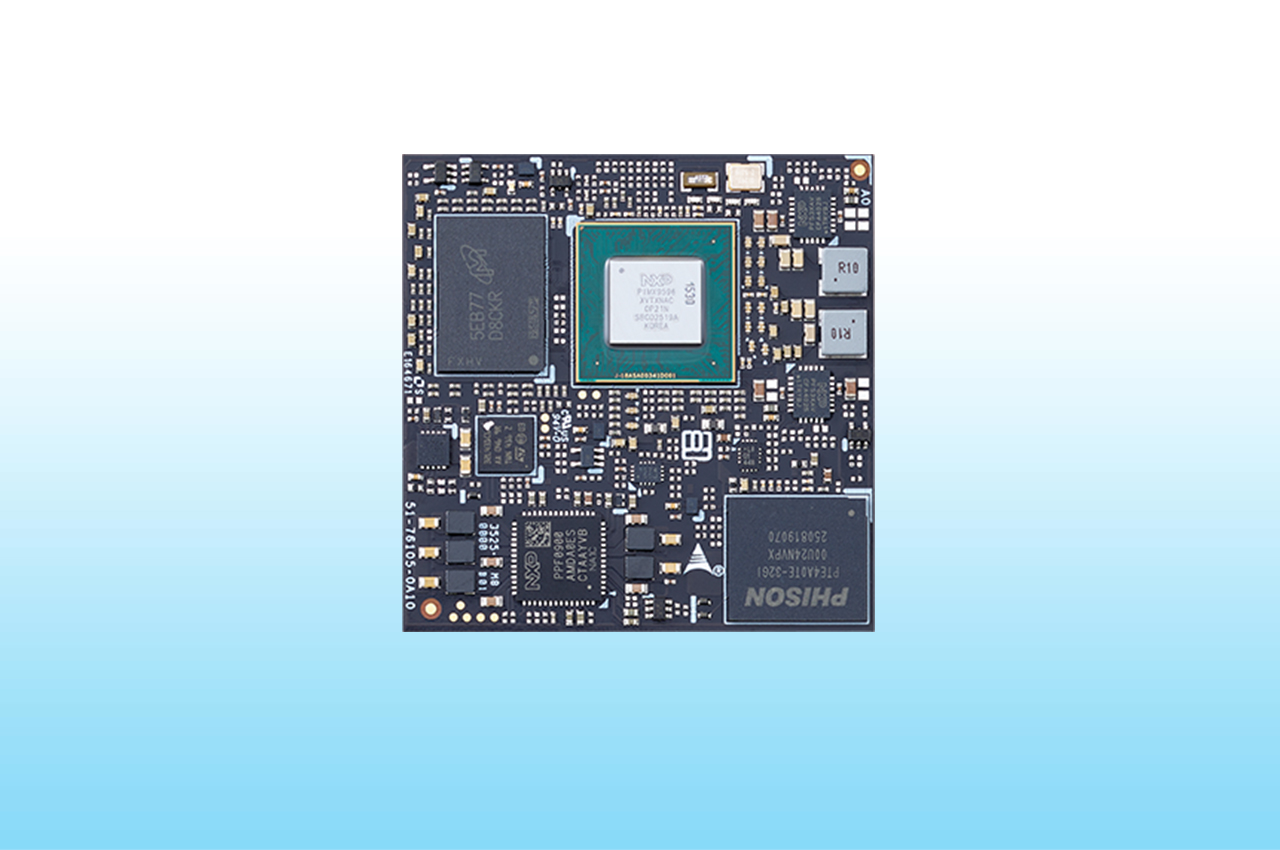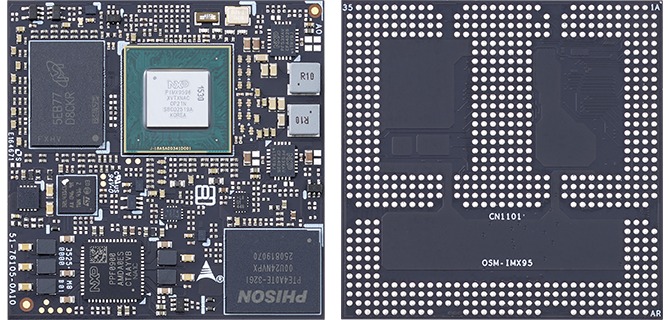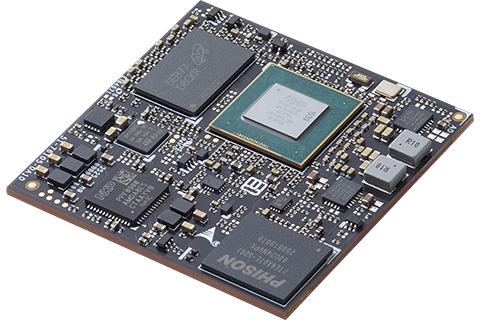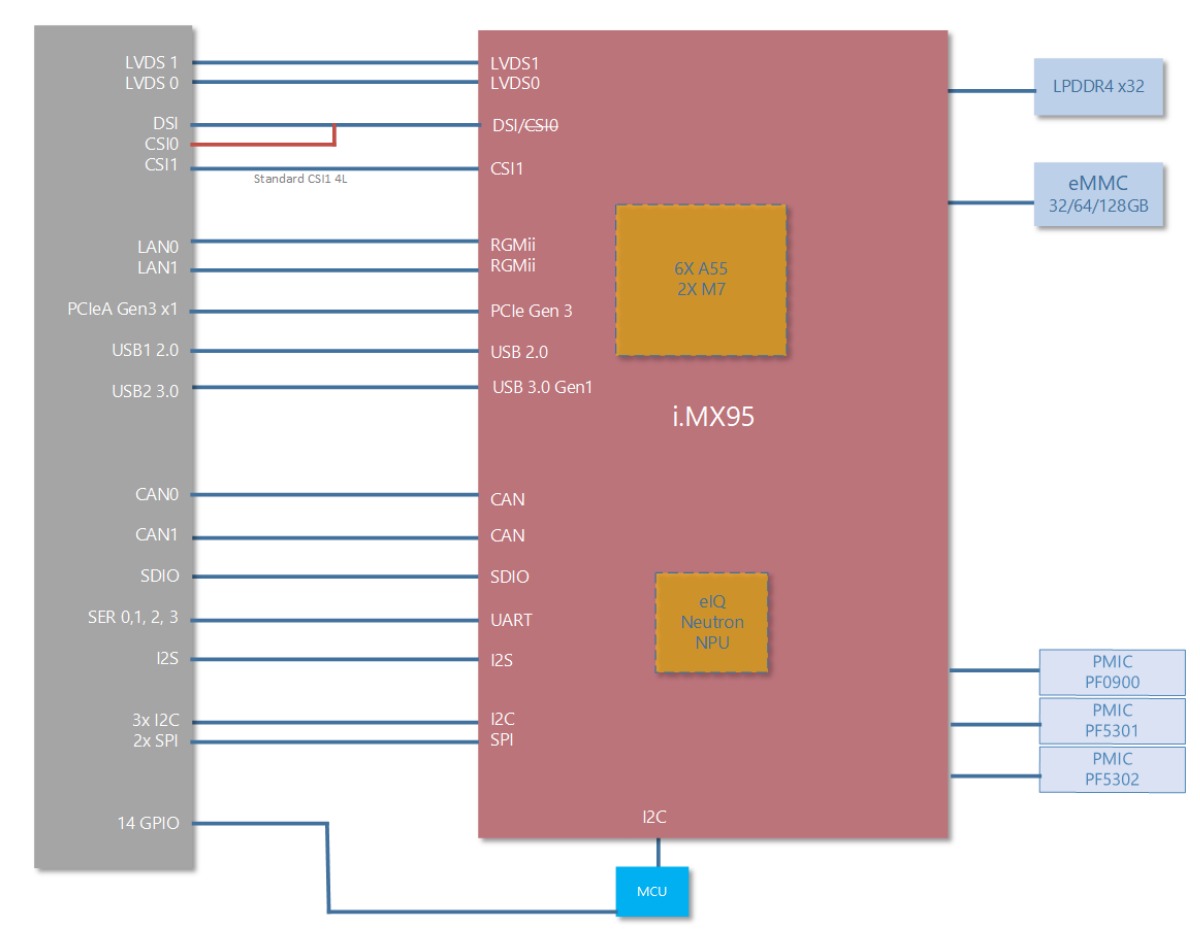In today’s embedded-computing landscape, both performance and integration matter more than ever. Developers pushing the edge of innovation are increasingly adopting modules based on the NXP i.MX SoC family, which combines multi-core Arm Cortex-A processing with dedicated real-time and AI acceleration. The ADLINK OSM-IMX95, built around the NXP i.MX 95 processor, is designed for next-generation IoT, industrial automation, and edge-AI applications.
Upon installation, the module has an immediate claim on the heterogeneous compute core of the NXP i.MX SoC – hexa-core Cortex-A55 cluster, Cortex-M7/M33 real-time cores, and eIQ Neutron NPU to infer AI on-device. The carrier-board interface is based on high-speed I/O, graphics and vision processing. Essentially, it provides complete SoC-level functionality in a solder-down module form factor to provide quick development and reduced time-to-market.
Previously, we covered another energy-efficient NXP i.MX-based System-on-Module — the Calixto i.MX93 VERSA SoM from Calixto Systems Pvt Ltd. Feel free to check it out if you’re interested.
ADLINK OSM-IMX95 – An NXP i.MX 95 OSM Size-L system-on-module
ADLINK OSM-IMX95 Open Standard Module Specifications:
The ADLINK OSM-IMX95 is a Size-L OSM 1.2–compliant module built around the NXP i.MX 95 SoC. It integrates up to six Arm Cortex-A55 performance cores clocked up to 1.8 GHz along with dedicated Cortex-M7 and Cortex-M33 real-time cores. It also includes a 2 TOPS eIQ Neutron NPU for AI inference workloads. The module supports 2 GB to 16 GB LPDDR4L RAM and up to 256 GB eMMC onboard storage, with optional SPI NOR flash over QSPI. Power input is a single 5 V DC rail.
Graphics and media subsystems include an Arm Mali-G310 3D GPU supporting OpenGL ES 3.2, Vulkan 1.2 and OpenCL 3.0, plus a video engine for 4Kp30 H.265/H.264 encode and decode. Display output options cover 4-lane MIPI-DSI, 8-lane LVDS and carrier-level HDMI/eDP via bridge. Dual MIPI-CSI2 camera interfaces are available for vision applications. For audio, the module exposes dual I²S lanes for high-resolution codecs up to 192 kHz.
Connectivity expands through PCIe Gen3 x1, USB 3.0 host, USB 2.0 device/host, dual Gigabit Ethernet with TSN, dual SDIO 4-bit interfaces, multiple UART/I²C/SPI interfaces, up to 12 GPIOs, and CAN bus depending on carrier implementation. The board measures 45 x 45 mm and supports 0°C to +60°C (standard) or -40°C to +85°C (rugged) operation with industrial shock, vibration and humidity compliance for long-life deployments.
Software Support:
The NXP i.MX SoC platform offers strong mainstream support for embedded Linux, including Yocto-based BSPs, with optional Android support based on project requirements. The OSM-IMX95 module ship-ready with established BSPs, allowing developers to skip low-level bring-up and move directly into application development. Its heterogeneous compute architecture makes workload distribution straightforward — Arm Cortex-A55 cores handle high-level processing, Cortex-M7/M33 manage real-time control, and the integrated NPU accelerates AI inferencing. This enables the module to function as a complete and scalable embedded edge computing platform out of the box.
If you’re looking to integrate a module powered by the NXP i.MX SoC, the ADLINK OSM-IMX95 is already listed on the official ADLINK website. It is currently marked as “Preliminary,” with pricing not yet disclosed, but you can request a quote directly through the “Request Info” or “Where to Buy” options.



